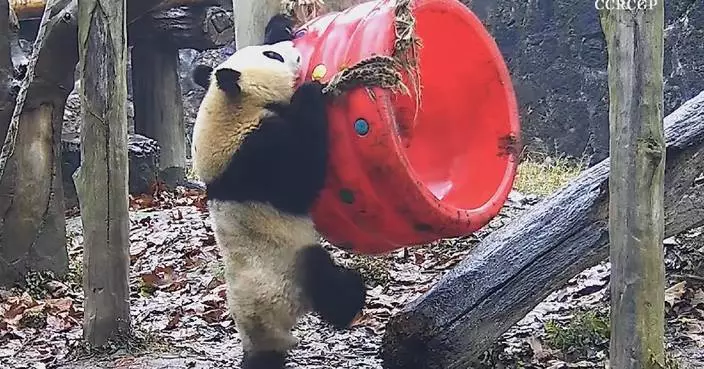Nepal's former Minister of Culture, Tourism and Civil Aviation Yogesh Bhattarai expects more cooperation between Nepal and China in the future, especially under the Belt and Road Initiative (BRI).
First proposed by China in 2013, the BRI is seen as a modern-day revival of the ancient Silk Road trade route that connected Asia, Europe and Africa, and has laid the foundations for a number of key infrastructure projects among partner countries over the last decade.
Nepal signed a framework to join the BRI in 2017 and has enjoyed benefits from BRI cooperation, particularly in terms of transportation. In 2019, an agreement was struck to align China's BRI with Nepal's policy of transforming itself from a land-locked country to a land-linked country.
Bhattarai said that the partnership has been instrumental in boosting Nepal's connectivity, emphasizing that it is an ongoing process.
"In Nepal, there is a Chinese support, especially the infrastructure and other things. And our government has signed the Belt and Road Initiative in 2017. And now we are in the phase of implementing the agreement. It is not done now," he said.
"We hope in the near future, we come together, China and Nepal, and to sign the implementation agreement of BRI, and we, Nepal, are very much eager to work together with Chinese investors, maybe in the government sector or private sector also," he added.

Former Nepali minister expects enhanced cooperation between Nepal and China under BRI

Former Nepali minister expects enhanced cooperation between Nepal and China under BRI
The Chinese People's Liberation Army (PLA) started the annual training for 2025, focusing on high-intensity drills across multiple arms to enhance comprehensive real combat capabilities.
At a training base on the plateau with an altitude of over 2,800 meters, a brigade of the 76th Group Army conducted a full-staff, full-equipment deployment exercise based on actual combat scenarios.
The soldiers completed tasks such as equipment deployment, formation adjustment, and railway loading within a specified time, improving their emergency deployment capabilities in the harsh high-altitude, low-oxygen environment.
As the new year begins, naval forces have sailed to the deep seas for real combat-oriented training.
A submarine detachment of the Southern Theater Command Navy conducted underwater attack and defense drills, testing and enhancing the single-submarine combat capabilities and coordinated operational abilities under complex conditions.
"At the beginning of the New Year, we have commenced high-intensity military training. We practice coordination ability, combat skills and combat style to ensure we can project forces and win battles at any time," said Wang Cunnian, a naval officer.
Meanwhile, the Air Force's aviation troops, ground-to-air missile forces, and radar troops have carried out joint training on multiple aircraft types in realistic battlefield environments, honing their combat capabilities.
At an airbase of the Eastern Theater Command Air Force, several J-16 fighter jets took off in combat formation, with pilots sharpening their air combat, close air support, and ground assault skills.
The Rocket Force has also launched a series of drills based on established programs, creating complex confrontation environments to enhance strategic deterrence and real combat abilities, from deserts to deep mountains, from snowy plateaus to waters in the South China Sea.
The People's Armed Police Force has also kicked off a wave of realistic exercises across multiple domains and specialties.
At the Falcon Commandos training base, special operation members are conducting exercises on "ground anti-hijacking" and "train anti-hostage" scenarios, comprehensively testing their emergency response and decisive action capabilities.
"In the new year, Falcon commandos will bear in mind President Xi's instructions, adhere to principles of real combat-oriented training, special training for special operation, deepen research on counter-terrorism tasks, and highlight research and training on topics such as precise command and control, three-dimensional delivery, tactical depth raids, and integrated reconnaissance and strike. We will improve all-time, all-domain, and all-weather combat capabilities, and strive to build a world-class counter-terrorism special unit," said Major Yang Zhen, member of the Falcon Commandos.

Various PLA services start annual training for 2025











